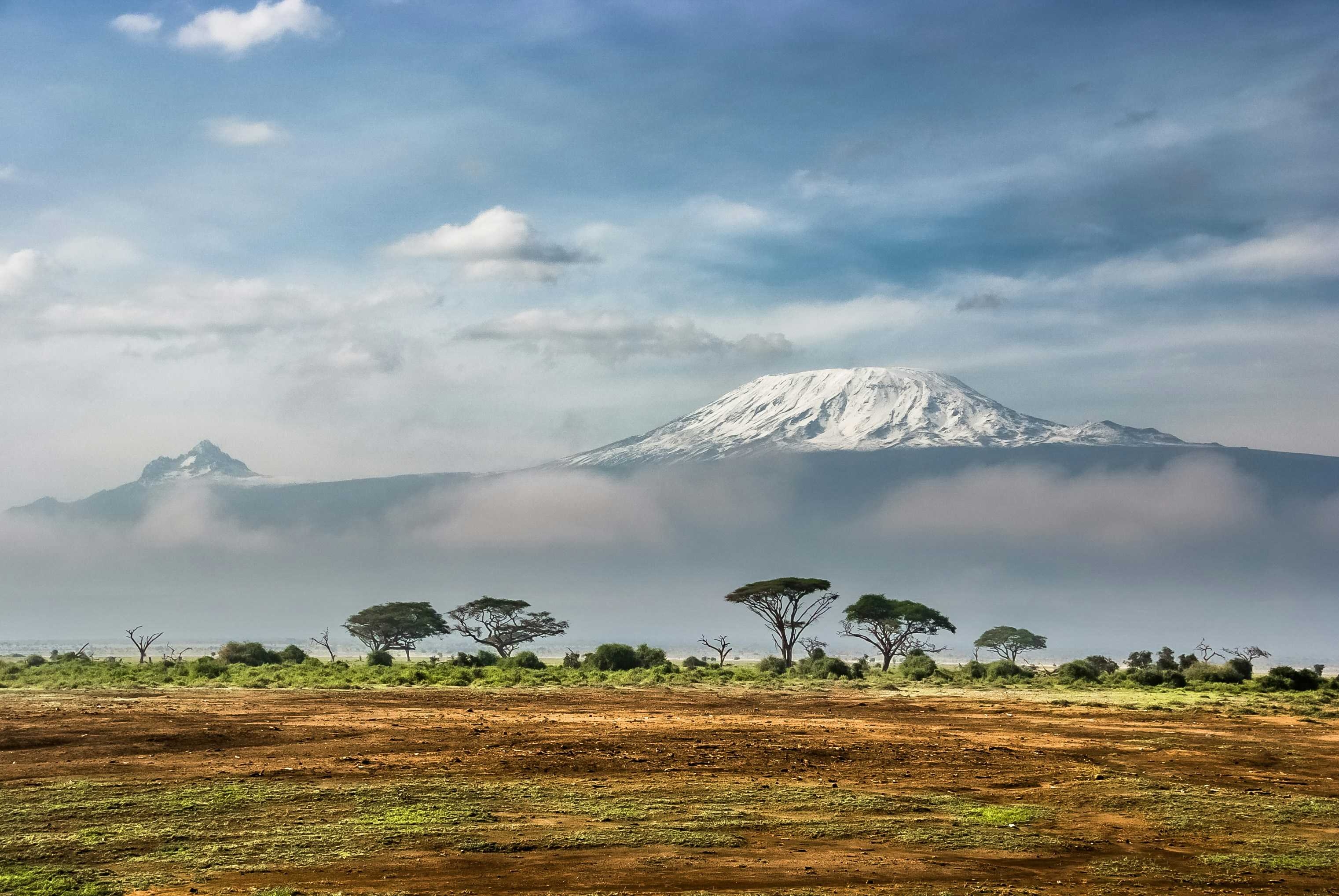Kenya, with its stunning landscapes and diverse wildlife, is a popular destination for travelers seeking unique and authentic experiences. As the demand for sustainable travel grows, Kenya has embraced eco-tourism initiatives to protect its natural resources and promote responsible tourism practices. Sustainable transportation options play a crucial role in reducing the carbon footprint and preserving the country's pristine environment.
In recent years, there has been a shift towards sustainable transportation methods in Kenya, ensuring that travelers can explore the country while minimizing their impact on the environment. From eco-friendly safari vehicles to public transportation, there are several options available for those who wish to travel sustainably.
Let's delve into the various sustainable transportation options in Kenya, highlighting the benefits of eco-friendly safari vehicles and providing information on using public transportation for sustainable travel. By choosing these options, travelers can contribute to the conservation efforts in Kenya while enjoying unforgettable experiences.
Exploring Eco-Friendly Safari Vehicles and Public Transportation
When it comes to sustainable travel in Kenya, transportation plays a crucial role. As travelers, it is important for us to choose eco-friendly options that minimize our impact on the environment. In this section, we will explore two sustainable transportation options in Kenya: eco-friendly safari vehicles and public transportation.
Eco-Friendly Safari Vehicles
A safari is a must-do experience in Kenya, allowing travelers to witness the incredible wildlife and stunning landscapes of the country. To ensure that these safaris are conducted in an environmentally friendly manner, many tour operators now offer eco-friendly safari vehicles.
These vehicles are designed with sustainability in mind, using low-emission engines and alternative fuels such as biodiesel or electric power. By opting for an eco-friendly safari vehicle, travelers can enjoy their wildlife adventure while minimizing their carbon footprint.
In addition to their eco-friendly features, these vehicles are also equipped with all the necessary amenities for a comfortable safari experience. From spacious seating to large windows for optimal wildlife viewing, these vehicles provide a sustainable and enjoyable way to explore Kenya's national parks and reserves.
Public Transportation
For those looking to immerse themselves in the local culture and explore Kenya on a budget, public transportation is a great option. Using public transportation not only reduces individual carbon emissions but also supports the local economy.
In major cities like Nairobi and Mombasa, travelers can easily navigate the city using matatus, which are shared minivans. These matatus operate on set routes and are an affordable and efficient way to get around. However, it is important to note that matatus can be crowded and sometimes lack proper safety measures, so it is advisable to exercise caution while using them.
For longer journeys, buses and trains are available, providing a more comfortable and sustainable option. These modes of public transportation connect major cities and towns across the country, allowing travelers to explore different regions of Kenya while minimizing their environmental impact.
By opting for public transportation, travelers not only reduce their carbon footprint but also have the opportunity to interact with locals and experience the authentic culture of Kenya.
Sustainable transportation options in Kenya, such as eco-friendly safari vehicles and public transportation, are essential for reducing the environmental impact of travel. By choosing these eco-conscious options, travelers can enjoy their trip to Kenya while contributing to the preservation of its natural beauty and supporting local communities.
Benefits and Features of Using Eco-Friendly Safari Vehicles
When it comes to exploring Kenya's stunning wildlife and landscapes, using eco-friendly safari vehicles is not only a responsible choice but also offers numerous benefits. These vehicles are designed with sustainability in mind, aiming to minimize their impact on the environment while providing a comfortable and enjoyable safari experience.
Reduced Carbon Footprint
One of the primary features of eco-friendly safari vehicles is their reduced carbon emissions. These vehicles are often powered by low-emission engines or alternative fuels, such as biodiesel or electric power. By opting for these vehicles, travelers can significantly reduce their carbon footprint and contribute to the preservation of Kenya's precious ecosystems.
Noise Reduction
Eco-friendly safari vehicles are also designed to minimize noise pollution, ensuring a more peaceful and immersive safari experience. The quieter engines allow travelers to observe wildlife in their natural habitats without disturbing their behavior or causing stress. This approach enables a more sustainable and respectful encounter with Kenya's diverse flora and fauna.
Wildlife Conservation
Using eco-friendly safari vehicles plays a crucial role in wildlife conservation efforts. These vehicles are often equipped with advanced technology, including GPS tracking systems and wildlife monitoring tools. This technology helps safari guides and park rangers to effectively monitor and protect Kenya's endangered species, ensuring their survival for future generations.
Comfort and Safety
Eco-friendly safari vehicles prioritize the comfort and safety of travelers. These vehicles are typically equipped with spacious interiors, comfortable seating, and large windows, allowing for excellent visibility during game drives. Additionally, they are designed to withstand rugged terrains, ensuring a smooth and secure journey through Kenya's national parks and reserves.
Support for Local Communities
Many eco-friendly safari vehicles are sourced from local manufacturers or businesses, supporting the local economy and creating job opportunities for communities near wildlife reserves. By choosing these vehicles, travelers contribute to sustainable tourism practices that benefit both the environment and local communities.
Opting for eco-friendly safari vehicles when exploring Kenya's wildlife offers numerous benefits. From reducing carbon emissions and noise pollution to supporting wildlife conservation and local communities, these vehicles provide a sustainable and enjoyable safari experience. By embracing these transportation options, travelers can make a positive impact and actively participate in the preservation of Kenya's natural wonders.
Information on using public transportation for sustainable travel
Public transportation in Kenya offers a convenient and sustainable way to explore the country. By utilizing public transportation options, travelers can reduce their carbon footprint and contribute to the preservation of the environment.
Matatus: The Heartbeat of Public Transportation
One of the most common forms of public transportation in Kenya is the matatus. These minibusses can be found bustling through the streets of major cities and towns, providing an affordable and efficient means of getting around.
Matatus are not only a popular mode of transportation for locals but also for adventurous travelers seeking an authentic Kenyan experience. These vibrant vehicles are often adorned with colorful decorations and blaring loud music, creating a lively atmosphere on the road.
Benefits of Using Matatus
Using matatus for your travels in Kenya has several benefits. Firstly, they are an environmentally friendly option as they transport multiple passengers, reducing the number of individual cars on the road. This helps to decrease air pollution and congestion.
Secondly, matatus are an affordable mode of transportation, making them accessible to both locals and travelers on a budget. With fixed routes and fares, you can easily plan your journey and avoid unexpected expenses.
Tips for Using Matatus
When using matatus, it is important to keep a few tips in mind to ensure a smooth and enjoyable experience:
Know the Routes: Familiarize yourself with the routes and destinations of the matatus before boarding. This will help you navigate the city efficiently and minimize the chances of getting lost.
Be Mindful of Peak Hours: Matatus can get crowded during peak hours, especially in major cities. Plan your travel accordingly to avoid long waits or uncomfortable rides.
Carry Small Change: It is advisable to carry small denominations of Kenyan shillings when using matatus as they may not always have change for larger bills.
Be Aware of Safety: While matatus are generally safe, it is important to be cautious and aware of your surroundings. Keep your belongings secure and avoid displaying valuable items.
Other Public Transportation Options
In addition to matatus, Kenya also offers other forms of public transportation, such as buses and trains. These options are ideal for longer journeys between cities and towns.
Buses provide a comfortable and reliable mode of transportation, with various companies offering intercity routes. Similarly, trains offer a scenic and relaxed way to travel through the country, allowing you to enjoy the beautiful landscapes of Kenya.
Embrace the Adventure
Public transportation in Kenya provides sustainable and affordable options for travelers seeking to explore the country. Whether you choose to hop on a colorful matatu or embark on a scenic train journey, opting for public transportation contributes to the conservation of the environment and allows you to immerse yourself in the local culture. So, embrace the adventure and hop aboard Kenya's public transportation system for an unforgettable sustainable travel experience.




